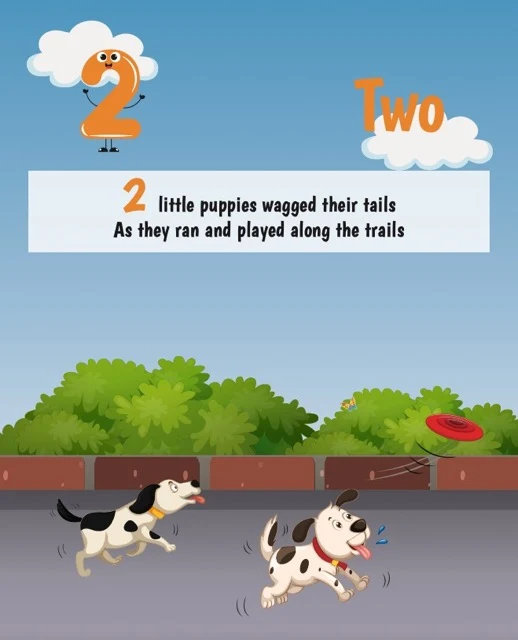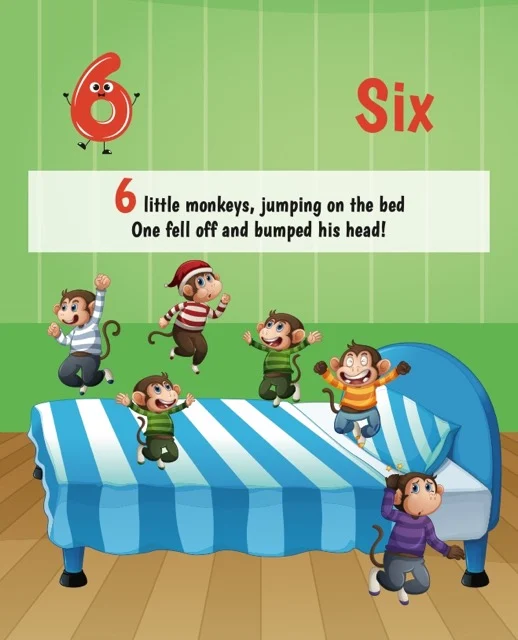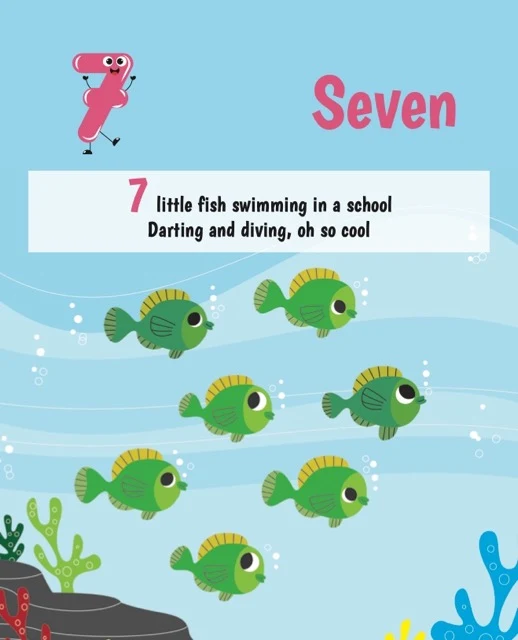Number Rhymes in Early Childhood Education
Three sources explore the use of number rhymes in early childhood education. Key benefits include improved number recognition, counting skills, and number sense, alongside enhanced language development and engagement. The sources emphasize the importance of accessibility and inclusivity through adaptation to different languages and cultures. Effective implementation involves early exposure, interactive engagement, and multimodal learning. Ultimately, number rhymes are shown to build a strong foundation for future math success and foster a positive attitude towards learning mathematics.
Number Rhymes in Early Childhood Education
Briefing Doc: Number Rhymes in Early Childhood Education
This briefing doc reviews the main themes and key findings from three sources on the use of number rhymes in early childhood education: "Number Rhymes: A Guide for Parents and Educators", "Number Rhymes: A Study Guide", and "Testing Theme: Number Rhymes.pdf".
Key Themes:
1.
Benefits of Number Rhymes: Number rhymes offer a multifaceted approach to early math learning, going beyond simple number recognition. They foster:
○
Number Recognition: Introduction to numerical symbols and their corresponding quantities.
○
Counting Skills: Reinforcement of counting sequences, both forward and backward.
○
Number Sense: Development of a basic understanding of quantity through the association of numbers with objects and actions.
○
Language Development: Introduction of new vocabulary and enhancement of listening skills.
○
Fun and Engagement: Creation of an enjoyable and entertaining learning experience.
"Number rhymes offer numerous benefits: Number Recognition, Counting Skills, Number Sense, Language Development, Fun and Engagement." - Number Rhymes: A Guide for Parents and Educators
2.
Accessibility and Inclusivity: Number rhymes can be adapted and translated into different languages, ensuring accessibility for children from various cultural backgrounds. This inclusivity is crucial for equitable learning opportunities.
"Adapting number rhymes to different languages makes them accessible and inclusive to children from diverse cultural backgrounds." - Number Rhymes: A Study Guide
3.
Effective Use of Number Rhymes:
○
Start Early: Children can benefit from exposure to number rhymes as early as infancy.
○
Interactive Engagement: Encourage active participation through games, movements, and the use of props.
○
Multimodal Learning: Combine rhymes with visuals, as demonstrated in "Testing Theme: Number Rhymes.pdf", where each number rhyme is accompanied by a colorful illustration featuring the corresponding number of objects.
4.
Impact on Future Math Learning: Number rhymes lay a strong foundation for future math learning by:
○
Developing Number Fluency: Increasing comfort and efficiency in working with numbers.
○
Building Early Math Skills: Introducing basic mathematical concepts like counting, one-to-one correspondence, and quantity.
○
Fostering a Positive Attitude: Creating positive associations with numbers, leading to a more confident approach to future math learning.
"By building number fluency, introducing basic math concepts, and fostering a positive attitude towards numbers, number rhymes provide a foundation for future math learning." - Number Rhymes: A Study Guide
Key Takeaways:
●
Number rhymes are a powerful tool for introducing young children to numbers and fundamental math concepts.
●
Their engaging and accessible nature makes them suitable for children from diverse backgrounds and learning styles.
●
Early exposure to number rhymes can have a lasting positive impact on a child's attitude towards mathematics and future learning success.
This briefing document provides a concise overview of the importance of number rhymes in early childhood education. It highlights the benefits, accessibility, and practical applications of using number rhymes to foster a strong foundation for future mathematical understanding and a positive attitude towards learning.
Number Rhymes: A Guide for Parents and Educators
Number Rhymes FAQ
1. What are number rhymes?
Number rhymes are short, catchy poems or songs that help children learn and remember numbers. They often use repetition, rhythm, and imagery to make numbers more engaging and memorable.
2. How do number rhymes benefit children?
Number rhymes offer numerous benefits:
●
Number Recognition: They introduce children to the numerical symbols and their corresponding quantities.
●
Counting Skills: The rhythmic patterns reinforce counting sequences, helping children learn to count forward and backward.
●
Number Sense: Rhymes provide context for numbers, associating them with objects or actions, which helps develop a basic understanding of quantity.
●
Language Development: The rhymes introduce new vocabulary and enhance listening skills.
●
Fun and Engagement: Rhymes make learning about numbers enjoyable and entertaining for young children.
3. What are some examples of number rhymes?
●
One little bunny went out to play.
●
Two little kittens, soft and gray.
●
Three little birds singing in a tree.
●
Four little puppies, happy as can be.
●
Five little ducks went for a swim.
●
Six little monkeys jumping in the gym.
●
Seven little fish swimming in a bowl.
●
Eight little bees buzzing around a hole.
●
Nine little stars shining up in the sky.
●
Ten little fingers, waving high and low.
4. At what age can children start learning number rhymes?
Children can begin learning number rhymes as early as infancy. Babies enjoy the rhythm and sounds of rhymes, even if they don't understand the meaning. Toddlers and preschoolers can start actively participating in reciting the rhymes and counting along.
5. Can number rhymes be used in different languages?
Absolutely! Number rhymes can be adapted and translated into different languages, making them accessible to children from various cultural backgrounds.
6. How can I use number rhymes with my child?
●
Read or Sing Together: Share number rhyme books or sing the rhymes together.
●
Use Props: Use toys, fingers, or everyday objects to represent the numbers in the rhymes.
●
Create Actions: Add simple movements or gestures to accompany the rhymes.
●
Make It a Game: Turn number rhymes into interactive games by asking your child to find a certain number of objects or to count along with you.
7. Are there any resources available for finding number rhymes?
Yes! Numerous books, websites, and apps offer a wide variety of number rhymes for children. You can also find videos of animated number rhymes on platforms like YouTube.
8. How can number rhymes prepare children for future math learning?
Number rhymes provide a solid foundation for future math learning by:
●
Developing Number Fluency: Children become comfortable with numbers and their sequence.
●
Building Early Math Skills: They begin to understand basic math concepts like counting, one-to-one correspondence, and quantity.
●
Fostering a Positive Attitude: Rhymes create a positive association with numbers, setting the stage for enjoyable math learning in the future.
Number Rhymes: A Study Guide
Number Rhymes: A Comprehensive Study Guide
Short-Answer Quiz
Instructions: Answer the following questions in 2-3 sentences each.
1.
What are the key characteristics of number rhymes?
2.
How do number rhymes contribute to language development in children?
3.
Describe two ways number rhymes can enhance number sense.
4.
Explain how number rhymes support the development of counting skills.
5.
At what age can children begin benefiting from exposure to number rhymes?
6.
Why is it important that number rhymes can be adapted to different languages?
7.
Suggest three interactive ways to engage children with number rhymes.
8.
How can parents and educators effectively utilize props when sharing number rhymes?
9.
List three resources where you can find number rhymes for children.
10.
How do number rhymes prepare children for more advanced mathematical concepts?
Short-Answer Quiz Answer Key
1.
Number rhymes are short, engaging poems or songs that utilize repetition, rhythm, and imagery to help children learn about numbers.
2.
Number rhymes introduce new vocabulary and encourage attentive listening, fostering language development.
3.
Number rhymes associate numbers with tangible objects or actions and reinforce counting sequences, helping children develop a fundamental understanding of quantity.
4.
The rhythmic patterns within number rhymes help children learn to count both forward and backward, strengthening their counting skills.
5.
Children can begin benefiting from exposure to number rhymes as early as infancy, enjoying the rhythm and sounds even before understanding the meaning.
6.
Adapting number rhymes to different languages makes them accessible and inclusive to children from diverse cultural backgrounds.
7.
To engage children interactively with number rhymes, you can turn them into games, add movements or gestures, or ask children to find a specific number of objects.
8.
Props like toys, fingers, or everyday objects can visually represent the numbers within the rhymes, making them more concrete and understandable.
9.
Resources for number rhymes include books, websites, apps, and video platforms like YouTube.
10.
By building number fluency, introducing basic math concepts, and fostering a positive attitude towards numbers, number rhymes provide a foundation for future math learning.
Essay Questions
1.
Discuss the multifaceted benefits of incorporating number rhymes into early childhood education. How do these benefits extend beyond basic number recognition?
2.
Analyze the role of repetition, rhythm, and imagery in making number rhymes effective tools for learning. How do these elements contribute to memorability and engagement?
3.
Explain the connection between number rhymes and the development of early mathematical skills. Provide specific examples of how these rhymes support understanding of concepts like counting, one-to-one correspondence, and quantity.
4.
Evaluate the importance of making number rhymes accessible to children from diverse linguistic and cultural backgrounds. How can educators ensure inclusivity when using number rhymes in the classroom?
5.
Explore the long-term impact of early exposure to number rhymes on a child's attitude towards mathematics. How can these rhymes foster a positive and confident approach to learning math concepts?
Glossary of Key Terms
●
Number Rhymes: Short, catchy poems or songs that use repetition, rhythm, and imagery to teach children about numbers.
●
Number Recognition: The ability to identify and name numerical symbols.
●
Counting Skills: The ability to count objects accurately, both forward and backward.
●
Number Sense: A fundamental understanding of quantity, including concepts like more, less, and equal.
●
Language Development: The process of acquiring and refining language skills, including vocabulary, grammar, and comprehension.
●
Props: Objects used to represent or illustrate concepts in teaching.
●
Interactive Games: Activities that involve active participation and engagement from children.
●
Number Fluency: The ability to work with numbers comfortably and efficiently.
●
One-to-One Correspondence: The concept that each object is counted only once.
●
Quantity: The amount or number of something.









